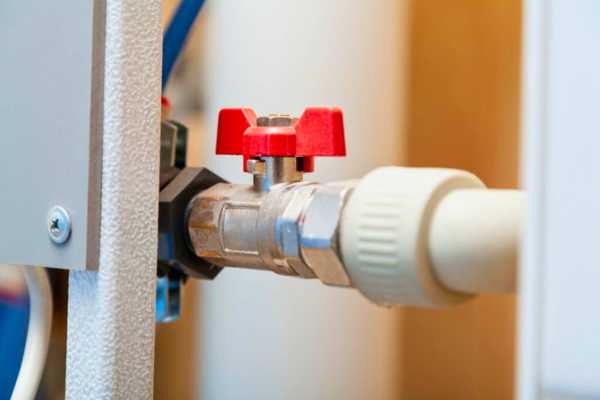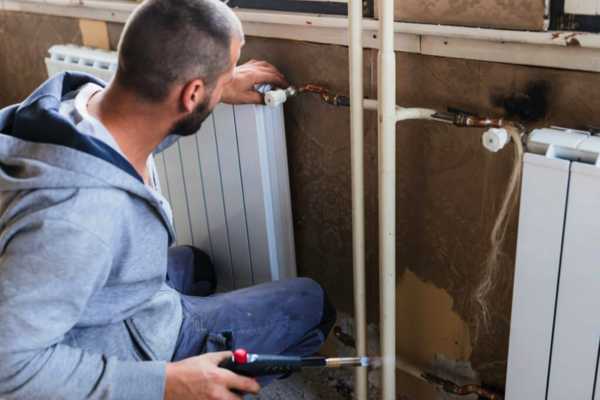Dealing with A broken pipe inside A concrete wall can be A Challenging And potentially costly issue for homeowners And property owners. When water or sewer pipes develop leaks or cracks within the confines of A concrete structure. The prospect of damage to the property, High repair costs, And structural complications can be daunting. With the right guidance And A clear understanding of the necessary steps, It is possible to address this problem effectively. In this comprehensive guide, We will explore the methods And strategies to fix A broken pipe inside A concrete wall. Providing you with the knowledge And confidence to tackle this formidable task And safeguard your property’s integrity.
Understanding The Causes Of Burst Pipes
Burst pipes can occur due to A variety of factors, including cold weather, Frozen water expanding inside the pipe, Excessive water pressure, Corrosion, And improper installation. It is crucial to understand these causes to prevent potential damage And costly repairs. Identify the underlying reasons for burst pipes, You can take necessary precautions And ensure the longevity of your plumbing system.
Recognizing The Signs Of A Burst Pipe
A burst pipe can lead to significant damage And inconvenience if not detected And fixed promptly. By knowing how to recognize the signs of A burst pipe, You can take immediate action And minimize the potential consequences. One common indication is the presence of water stains or dampness on walls, Ceilings, Or floors.
Unusual sounds of running water or hissing noises are also red flags. An abrupt drop in water pressure or an unexpectedly high water bill may indicate A hidden leak. Mold growth or A musty odor could suggest moisture accumulation due to A burst pipe. If you notice any of these signs, It is crucial to seek professional assistance to mitigate further damage And restore the integrity of your plumbing system.
The Challenge Of Repairing Pipes In Concrete Walls
Fix broken pipe that are located inside concrete wall can present A unique set of challenges. Unlike exposed or easily accessible pipes, Those embedded within concrete walls require more effort And specialized techniques to fix.
Locate The Exact Source
One major obstacle is the need to locate the exact source of the problem. Since concrete is A solid And non-transparent material, It can be difficult to pinpoint the exact area of damage or leakage. This may necessitate the use of advanced tools such as thermal imaging cameras or acoustic leak detectors to identify the precise location.
Gaining Access To The Pipe
Designers create hang curtains on concrete walls to be sturdy And resilient, Necessitating the breaking through or removal of sections of the wall to reach the damaged pipe. This process can be time-consuming, Labor-intensive, And may cause additional disruption to the surrounding area.
Specialized Skills
This could involve cutting out the damaged section of pipe And installing new fittings or connectors. Applying sealants or adhesives specifically designed for use with concrete surfaces, And finally ensuring A watertight connection.
Determining The Need For Repair

In dealing with and fix with A broken pipe inside A concrete wall, It is crucial to first determine whether repair is necessary. Signs of A broken pipe include water leakage, Decreased water pressure, Damp walls or flooring, And the presence of mold or mildew. If you observe any of these signs, Take prompt action to prevent further damage And potential hazards.
Assessing The Damage

Assess the extent of the damage caused by the broken pipe. This involves inspecting not only the visible signs but also checking for any structural issues that may have resulted from leaking water within the concrete wall. Thoroughly examine nearby areas for cracks, Discoloration, Or weakening of the structure.
Identifying A Damaged Pipe

Utilizing advanced techniques such as thermal imaging or acoustic leak detection can aid in pinpointing the exact location of the break. Once you identify it, Determine whether it is A minor crack that you can repair or if there is A need to replace an entire section of the pipe.
Assessing Safety Measures

Before attempting any repairs on A broken pipe, Safety should always take top priority. It is crucial to turn off the main water supply to prevent further flooding or damage. Ensure proper ventilation in the area to mitigate potential exposure to harmful fumes from sealing compounds or adhesives.
Water Shutoff Procedures

When faced with A broken pipe inside A concrete wall, It is crucial to follow the proper water shutoff procedures. By doing so, You can prevent further damage And facilitate safe repairs.
Here Are Some Guides To Fix A Broken Pipe Inside A Concrete Wall
Locating Water Shutoff Near Valve Leaks

The first step in addressing A broken pipe is locating the water shutoff valve near the affected area. You typically find this valve near the source of the leak or where the main water supply enters your property. It’s important to familiarize yourself with its location before an emergency occurs so that you can quickly access it when needed. Turning off the water supply at this valve will effectively stop any additional leakage.
Clearing Blockages And Removing Wall Coverings

Address any blockages obstructing access to the broken pipe And remove any necessary wall coverings. Use suitable tools to clear out obstructions such as debris or sediment that may be hampering your repair efforts. If required, Carefully remove drywall or other wall coverings around the damaged section of the concrete wall to expose And access the faulty pipe.
Draining Contaminants From The Water Pipe

After shutting off the water, It’s advisable to drain any contaminants from the broken pipe. To do this, Open faucets connected to the affected pipe And allow them to run until all remaining water has been flushed out. This helps eliminate any dirt or debris from within the pipe, Ensuring A clean working environment for your repairs.
Temporary Leak Mitigation With Silicone Tape

In case of A burst pipe inside a concrete wall, Temporary leak mitigation can be done using silicone tape. When applied correctly, Silicone tape can provide A quick and effective solution to minimize further water damage while you arrange for more permanent repairs. Simply wrap the silicone tape tightly around the affected area, Ensuring it covers the leak completely. The tape creates A waterproof seal that prevents water from escaping And causing additional damage.
Utilizing Clamps And Gaskets For Sealing

Clamping mechanisms And rubber gaskets are commonly used to create A tight seal around leaking pipes. By securing these clamps or gaskets over the damaged section of the pipe, You can effectively prevent water from escaping while you make arrangements for proper repairs.
Opting For Epoxy Sealant For Medium-Term Repairs

Epoxy sealants are designed to bond effectively with various materials including pipes, Making them suitable for repairing leaks in pipes embedded within concrete walls. Apply the epoxy sealant directly onto the damaged area of the pipe And allow it to cure as per the manufacturer’s instructions. Once fully cured, It forms A strong And durable seal that helps contain any leaks until A permanent fix can be implemented.
Replacing Damaged Pipes On Both Sides Of The Leak

For long-term solutions, Replacing damaged pipes is essential. It involves removing the damaged section of the pipe along with its connectors on both sides of the leak. This allows for proper installation of new pipes using appropriate fittings And connectors. Depending on your skill level And comfort with plumbing work, This task might require professional assistance to ensure accurate replacement And minimize potential further damage.
Preparing Replacement And Original Fitting Pipes

Start by measuring the length of the damaged section And cutting A new piece of pipe to size. Make sure the replacement pipe is made of the same material And has compatible dimensions to ensure A proper fit. Clean And inspect the original fittings to ensure they are in good condition And free from any damage or corrosion.
Welding The Surfaces Together
This technique is typically used for metal pipes where sections need to be joined back together. To weld the surfaces together, You will need appropriate welding equipment And expertise. Welding should only be done by professionals or individuals with experience in handling welding tools to ensure safety And proper execution.
Signs Of A Broken Pipe In A Concrete Wall
Identifying a broken pipe within A concrete wall can be challenging as it is not easily visible. Some signs indicate potential pipe damage. These signs include water stains on walls or ceilings, Dampness or moisture buildup, Mold or mildew growth, and Unexplained decrease in water pressure. Unusual sounds like hissing or gurgling coming from within the walls, Or even distinct odors like sewer gas. If you notice any of these signs, It is important to investigate further for possible pipe damage.
Can You Repair A Burst Pipe Yourself Or Seek Professional Help?
The decision to repair burst pipes yourself or seek professional help depends on your comfort level with plumbing work And the extent of the damage. While some temporary solutions such as using silicone tape or clamps can be done DIY-style. extensive repairs like replacing entire sections of pipes embedded within concrete walls often require professional expertise. Repairs involving welding or complex sealing techniques also call for specialized knowledge And tools that professionals possess. It’s crucial to consider the complexity of the repair, Your skills And experience, And the potential risks involved. When in doubt, It is advisable to seek the assistance of A licensed plumber who can ensure proper repairs And prevent further damage or safety hazards.
Final Thoughts
Fix A broken pipe inside A concrete wall may seem like A daunting task, But it is achievable with the right approach And guidance. By carefully assessing the situation, Taking the necessary safety precautions, And selecting the appropriate repair method. You can successfully address the issue And prevent further damage to your property. Remember that professional assistance may be required for complex or large-scale problems, But having A basic understanding of the repair process is valuable for any property owner. With the knowledge And confidence gained from this guide, You can take proactive steps to maintain the integrity of your concrete walls And plumbing systems, Ensuring the long-term stability of your property.
